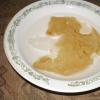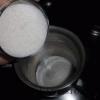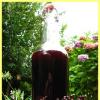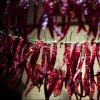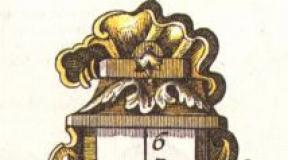The oak turns out to be a bread plant. Oak ordinary. Soup acorn milk
General information, places of growth
Oak, a genus of trees, less often shrubs of the beech family.
Among the huge variety of trees and shrubs, a special place belongs to the oak. It is durable and powerful. There are up to 600 species of oak on the globe; in our country, according to most experts, there are 20 species. Among them are sessile oak, Georgian oak, Gartvis oak and Mongolian oak. But the pedunculate oak, or summer oak, is the most numerous - it occupies the main area of our oak forests. The area of its distribution has the shape of a wedge, the wide part of which coincides with the western state border, and the tip is directed to the South Urals; the northern border runs somewhat north of the Baltic Sea, then south of Vologda and Perm to the Urals; the southern border - from Orenburg to Saratov, then along the Volga to the Don to Novocherkassk and to the mouth of the Dnieper. Pedunculate oak also grows in the Crimea and the Caucasus, it is found in Siberia (the region of Novosibirsk and Omsk), in the Altai Territory and the Trans-Urals, and even in Arkhangelsk.
In good conditions, trees develop a powerful root system, a high straight trunk and a powerful pyramidal or tent-shaped crown. In oaks grown in freedom, the crown is especially wide, sprawling, with thick branches; in the forest stand, it is less developed and the trunk is without branches, in the form of a column. The bark of the trees is dark gray, thick, fissured, but in young oaks it is smooth.
Oaks bloom simultaneously with the blooming of leaves, from the age of 30-60, but they bear abundant fruit only after 4-8 years. Ripe acorns fall off at the end of August - in September; they differ both in weight and in shape, pubescence, the nature of scales and pluses, and even have shades of color and a changing pattern, so the acorns of one tree differ from those of another. The trees are photophilous, grow better with lateral shading, but with a lighted top. It is not for nothing that foresters have a rule: "to bring up an oak in a fur coat, but with an open head."
At a young age, oaks are sensitive to frosts, especially to late spring frosts, from which they suffer even in the southern regions of their distribution; at the same time, they are quite hardy to low temperatures - up to 40 degrees. But the tree is demanding on soil conditions. It grows well on deep, fresh soils rich in minerals, where it develops a highly branched root system with a taproot, sometimes ten meters long. But on the sands, the tree grows stunted and clumsy, and in the sun it completely weakens and withers; at the same time, oaks are the only species that forms continuous stands on solonetzes.
Two forms of oak blossoming are noted: early and late. The second has advantages: the trees do not suffer from early frosts and do not overeat caterpillars of the gypsy moth, although oaks with both forms very often grow side by side.
Oak reproduces not only by acorns, but also vegetatively. As a rule, the next year after the felling of ripe oaks, shoots appear on the stumps, and by winter sometimes exceeding a height of a meter, which creates more favorable conditions for the oak to compete with other tree species. But the shape of the trunk and the quality of the wood of such an oak are lower than those of its counterparts grown from acorns. That is why a lot of work is being done in forestry to transfer unproductive oak forests of vegetative origin to seed forests and sow and plant young oak trees in clearings, not allowing any other vegetation to oppress them. With skillful regulation of oak lighting in one growing season, you can get two or three growths of branches, thereby accelerating the emergence of plants in the first tier. And then, under favorable soil and climatic conditions, these trees begin to participate in the accompanying tree and shrub species, forming the so-called complex forest stands, placed in several tiers. In the first, oak grows with ash, with an admixture of linden, maple, and sometimes aspen and birch; in the second, more shade-tolerant species - maple, linden, elm, mountain ash, pear, apple, sometimes field maple, and in the third tier - field maple, Tatar maple, hazel, warty euonymus and others.
Oak groves of this kind can be found in the former Tula zasakhs, the Tellerman massif, in the eastern part of the Voronezh nature reserve, in the Shipovsky forest, on the Belgorod and Kursk lands, in Trostyanets and the Black Forest, in the Chuvash and Kazakh oak forests and in other places. And in the south of Belarus and in the Ukrainian Polissya, oak and hornbeam forests are formed.
The three-tiered structure of the above-ground part of the oak forests also has its own underground structure. Therefore, as soon as the soil warms up in the spring, the leaves of the undergrowth species and some of the trees of the second tier open first, and only then the trees of the first. The grass cover, undergrowth and trees of the second tier, surrounding the trunks of the trees of the first - oak and ash, transform radiation and illumination, lower the high temperature in summer and increase air humidity, provide wind resistance of the plantation, protecting oaks from damage, help to clean their trunks from branches, and also improve soil nutrition conditions due to the rapid decomposition of fallen leaves and small branches. It is no coincidence that oak forests, which are complex in structure, remain cool during the heat. In such oak forests, foresters also receive the largest reserves of valuable timber. At present, the artificial creation of oak forests on the territory of the entire range of this wonderful hero tree, the giant tree, is one of the most important tasks.
In nature, oak can be high or low, with a wide or narrow pyramidal crown, as well as with leaves of various shapes. There are oak trees with a crown creeping along the ground. True, they have no practical significance in forestry, although their cultivation is interesting in green construction, in glades, on edges, on slopes of road cuts and embankments, on dumps - where tall trees are not required.
In the Donetsk Botanical Garden, creeping oaks of various shapes are experimentally grown thanks to the effect of gamma rays on acorns before sowing. In young seedlings, the apical bud does not develop and is not replaced by lateral buds. The stem stops growing up very early, forming only side branches and shoots, which, slightly rising, spread along the ground. By the age of five, half-meter trees reach a thickness of 4 centimeters. Lateral creeping branches grow up to 1.5 meters. Hanging leaves are also unusual - they are long, narrow and asymmetrical, sometimes up to 20 centimeters long and up to 4 centimeters wide.
Creeping oak is suitable primarily for planting in squares, parks, in particular with a contrasting decorative combination with pyramidal and weeping trees, as well as on parterre lawns, at the foot of sculptural groups, monuments and in other cases. Plants are propagated by seeds, and their most interesting specimens are grafted on an ordinary oak.
There is an ordinary oak and a weeping form. Weeping oak often appears in forests, but, being oppressed by the canopy of tall trees, usually falls out of the plantation.
Weeping oak was first described in the last century by the Swiss botanist A. Decandol. Since then, the plant has occasionally propagated in horticulture by grafting, being a mutation (change) of an ordinary oak. This has been proven by genetic experiments carried out in the Donetsk Botanical Garden, where many plants with a weeping crown shape were obtained by pre-sowing irradiation of acorns with gamma rays. This means that weeping oak can also be brought out artificially.
To propagate this breed, it is necessary to take shoots with buds and graft them in the spring to oak seedlings with a regular crown. Inoculations by kidneys are also possible - by budding shortly before they bloom. The weeping oaks in the Donetsk experiment have not yet borne fruit. And in Voronezh, for example, they bring normal well-germinated acorns. At the same time, their offspring also have weeping branches. The transmission of "weeping" by inheritance by seeds is interesting and important in practical terms, since it will make it possible to avoid laborious grafting.
Weeping oak is a valuable decorative form; it can serve as a decoration for squares and parks.
Old-timer trees are registered and protected as natural monuments.
Oak and history
"Clock Ages" - this is how M.Yu. Lermontov called such trees. For many centuries they stand, being living witnesses of historical events that took place at different times in human society. States arose and collapsed, social formations changed, and they all grow and mature. They are not only monuments of nature. They are messengers of past epochs, witnesses of the glorious deeds of the people, the life and work of great people.
In ancient times, people dedicated oaks to their most powerful gods: the Greeks - Apollo, the god of the sun, science and arts, the Romans - Jupiter, the god of the sky, rain, thunder and lightning, the Slavs - Perun, the god of thunder and lightning.
The oldest center of the cult of Zeus, the main god of the ancient gods, was a centuries-old oak tree in Dodona with a spring gushing from under the roots. It was here that the Dodona sanctuary arose, which in classical times became the richest temple with its own oracle, which provided the temple with an influx of abundant gifts from Greek states and individuals. At first, the oracle interpreted the rustling of oak leaves, and later prophesied by the ringing of vessels, on which a statue of a bronze boy hit with a flexible oak branch under the gusts of wind.
The Greeks for their needs used mainly gnarled oaks. The first archaic plows were made from them, so versatile in use that, if necessary, they could serve as a defensive and even throwing weapon. Such plows were called ayutogions. All their parts - as a rule, the drawbar and the coulter - were carved from one solid trunk. For plowing on bulls, Hesiod considered the "evergreen oak" to be the strongest tree (in Greece, oaks do not shed their leaves). This kind of oak plows can still be found in sparsely populated areas of the East.
By the way, the modern Latin name of the oak "cuercus" has the roots of the ancient language of the Celts - a group of tribes that inhabited the lands of modern France, Switzerland, Belgium four thousand years ago (in this territory the Romans called them Gauls), Northern Spain, the British Isles, and later - Northern Italy. In the 1st century BC, the Celts were partly conquered by the Romans. Nevertheless, they gave the victors something of their language. So, in particular, the Celtic name of oak took root in its Latin name - from the Celtic words "kuer" - red and "kuss" - tree.
For many peoples of Europe, acorns (among the Romans "juglans" - "Jupiter's fruits") served as an important help in nutrition. Already in recent times, chemists have thoroughly established and, having established, were amazed that acorns contain up to 57% starch (in potatoes, as a rule, it is no more than 20%), up to 7% protein (hardly 1.5-2% in potatoes), up to 10 % sugar and up to 5% fat. True, usually acorns had to be soaked for food because of bitterness.
Virgil also mentions oaks as food or "insurance" trees from human hunger.
Perhaps acorns were the "first bread" of the population of Europe. During the excavation of five-thousand-year-old Trypillia settlements in the ruins of a furnace, acorn prints were found in fragments of clay. It follows that people at that time already guessed how to bake a kind of "bread" from acorns; later, acorn flour was mixed into wheat or rye flour.
But it is not always necessary to soak acorns before eating or before grinding. In the south of Europe, in Greece, Spain and other Mediterranean countries oaks are known with "sweet" acorns, almost without bitterness. Perhaps that is why Cervantes does not mention the procedure for soaking acorns in Don Quixote when he treats his heroes with them. Moreover, according to Cervantes, this is clearly not an accidental, episodic dish of the Spaniards of his time. He just casually throws in one place of the novel: "When the meat dish was finished, the shepherds poured a lot of dry acorns on the lamb skins." In another: "Sancho also kept quiet; he ate acorns and now and then visited the second wineskin, which the shepherds, so that the wine would not heat up, hung from the oak."
Acorns of holm oak have a pleasant taste and are used as food by the inhabitants of the Mediterranean. It is named stone for its strong, hard and heavy (sinks in water) wood. Edible without soaking and very large acorns of oak virgton. This oak goes farther south than the others; grows in Florida, on the shores of the Gulf of Mexico, in the western part of Texas and in the northeastern part of Mexico. Until now, residents of Lusitania (Spain) and California Indians (USA) collect, store for future use and eat acorns.
In Russia, the oak played an outstanding role in the fight against enemy hordes. Notches were created from oak forests - chains of fallen trees stretched for hundreds of miles, which became a formidable obstacle to the movement of Batu's cavalry.
Under Peter I, centuries-old oak forests along the Voronezh River were declared the fund of the Admiralty. Damage to oak forests was punishable by a fine, or even catharsis. Peter's daughter pawns and forbids settling near the landings (1754).
Catherine II is not too lazy to send out forest protection decrees and instructs the Prince of Taurida, Field Marshal G.A. Potemkin to leave more acorns in the land near Odessa, so that the descendants of the oak would not have to be transported from the north. However, after her death, the oak forests of Voronezh, Kazan and Tambov began to be rapidly cut down. Tsar Pavel sent officers to the provinces to identify oak forests suitable for shipbuilding, but most often they returned with reports of oak stumps, on which they manage to flog the malicious choppers of the forest.
In the name of saving the forest, Pavel refuses to export it, but already his heir lifts the ban to amend the state treasury. The remnants of Kazan, Kiev, Poltava and Kherson oak forests are disappearing. Later, the pride of the Kuban, the sub-Maikop oak forest, will turn into sleepers.
Russian shipbuilders highly valued oak for its unprecedented strength.
From a ton of oak "mirror" (smooth) bark of young oak trees, 60 kilograms of tannins were obtained. The bark with iron sulphate gave paint. Strong in body and spirit, men preferred oak brooms to birch brooms, which are now used by our pampered generation. Housewives used the leaves for pickling vegetables.
But people fell in love with oaks not only for the strength and beauty of wood, the incomparable power of tinctures on oak leaves and the invigorating ferocity of bath brooms. These "eternal" trees, sometimes living up to 2000 years, serve as living monuments to outstanding figures of the historical past - military leaders, poets, writers and even fictional heroes of folk legends. "Personal" oaks, it turns out, are not only the gods.
So, for a long time the French kept the oak, under which in the city of Orleans she saw her "prophetic" dream, and then she swore an oath to liberate France from the English invaders Joan of Arc. In England, in Yorkshire, north of Nottingham Castle, residents carefully guard Robin's oak Gooda This oak tree is nearly 1,500 years old by Robin's admirers (a little over 400 by arborists).
Approximately as reliable as the legend of the oak of Robin Hood, the legend of the oak of Bohdan Khmelnitsky. This 700-year-old oak grows in the village of Khortitsa near Zaporozhye. The height of the oak is 36 meters. Crown diameter - 43 meters. The circumference of the trunk is 6 meters 32 centimeters. The legend claims that it was here that Bogdan Khmelnitsky took the oath from the Cossacks to fight the Polish gentry (according to another version, he simply rested here) and that it was under this oak that the letter to the Turkish Sultan, famous for its colorful expressions and sincere Cossack sincere frankness, was written. The Makhnovists tried to cut down a unique tree, one of the sights of Zaporozhye, for fuel for an armored train, and the fascist invaders did not dare to dig it up and plant it near the imperial office in Berlin. But the oak, as before, firmly holds on to its native land, grows and bears fruit. A museum of Cossack life is now open near the oak.
Oak was also used for construction purposes: Zaporizhzhya Cossacks made boards from mighty trunks, which were used to build elusive boats - "gulls". According to legend, even a cannonball could not penetrate their strong sides. On the "gulls" the Cossacks not only sailed along the Dnieper, but also crossed the Black Sea.
Famous in Belarus are "Suvorov oaks", so named because they were loved by the Russian commander Alexander Vasilyevich Suvorov. "Nikitin oak" near the former village of Bobrovka in the Smolensk region - a monument to another great commander - Mikhail Illarionovich Kutuzov. Here in 1812 he received Generals Miloradovich and Paskevich.
Silent, as if thinking about the past and the present, mighty oaks in Bryansk on the left bank of the Desna, opposite the famous Nightingale grove, reminds of a more distant history of our people. They are witnesses of the times of Ivan the Terrible and the Bryansk boyar Peresvet. Once oak forests covered the entire left bank, now they grow only within the city.
An oak grows in the Mukhrani Valley in Georgia, which is 800 years old, has a circumference of 11 meters, and a height of 20 meters. According to the legends that have survived to this day, under the mighty crown of this giant, commander Georgy Saakadze held a military council.
In California, in the middle of the central square of Auckland, in the city where Jack London spent his childhood and lived for a long time, stands a "personal" oak bearing the name of the writer. An oak tree was planted in his honor on January 26, 1917, on the very spot where Jack London once gave a speech, for which he was first arrested.
In St. Petersburg, on the Bolshaya Alley of Kamenny Island, a not very showy oak grows in the middle of the street, surrounded by an iron fence with cast-iron pedestals connected by heavy chains. On the fence there is a sign with the inscription: "The oak, planted according to legend by Peter the Great." Whether the oak tree was actually planted by Peter is hard to say. But it is definitely known that Peter took part in the planting of oaks in St. Petersburg. Near Moscow, the oldest oak tree (800 years old) has been preserved in Gorki Leninskie, where Vladimir Ilyich Lenin lived and worked in his last years. This oak is the same age as Moscow. Under its crown, on a wooden bench, Lenin liked to rest. This oak is protected, like everything connected with the memory of the great leader of the proletarian revolution.
As a monument to the courage, heroism of the Soviet people in the Great Patriotic War of 1941-1945, there is an oak-veteran in the Skolatsky forestry of the Ternopil region. On July 9, 1943, a meeting of the command and political staff of the partisan detachment of Sidor Kovpak was held near him.
The name of M.Yu. Lermontov is associated with an oak tree growing in Stavropol. The tablet attached to it says that under this oak Lermontov liked to relax and admire the picturesque valley of the Tashla River. And who knows, maybe it was this oak that inspired the images of the poem "Oak Leaf" to the poet.
In Ukraine, in the Surazh forestry, there are three giant 350-year-old oaks - "Taras Oaks". So they were named in honor of Taras Grigoryevich Shevchenko's stay in these parts in 1846.
All described oaks, however, are mere babies in comparison, for example, with an oak in Armenia on the slope of Mount Dur-Sar near the village of Lower Adgan (1500 years old). Of course, there is a legend about this oak - it was planted in 449 before the battle by the commander Vardan Mamikonyan. Lithuanians are proud of an even older oak. This oak grows near the village of Stelmuzhe, Zarasai region, its age is two millennia.
Oaks aged 300-500 years and in girth of 10-25 meters at the height of human growth are not uncommon. In France, for example, there were oak forests, where the trees reached 45 meters in height and were 900-2000 years old. The partisan oak in the Vosges has a crown diameter of 45 meters, a trunk circumference at the base of 18 meters and an age of about 700 years. In the parks of England and now there are still trees up to 40 meters high. Large old oaks grow in Belgium, Switzerland.
In our country there are also mighty oaks, whose age has exceeded five hundred years. Trees over 600 years old rise in the Kolomenskoye Estate Museum in Moscow. In Latvia, in the town of Edole, an oak is alive - the same age as Riga; not far from Mazsalaca, its colleague is about 800 years old. Very large trees are found in Belarus (in the Buda-Koshelevskaya dacha, in Belovezhskaya Pushcha) and in Ukraine (in the Trostyanets dacha and in the Black Forest). You can name many more veteran trees, centenarians, which are a historical landmark. And every time you meet these handsome trees, you come into contact with history.
Oak varieties
It is clear that not only the legendary and "nominal" oaks are protected in different countries. In Southern Italy, the Balkans, the islands of the Greek archipelago, and especially in Turkey, they are especially attentive to the oak forests of the large-scaled oak, the dried puffs of which, containing up to 45% tannin, are exported under the name wallonei. In a mixture with other tanning agents, Walloonia is used in the dressing of the thinnest types of leather. In Turkey, the collection of Walloon sometimes reaches 60 thousand tons.
In the Mediterranean, cork oaks grow - cork and western. They are bred in culture. The sweet acorns of the cork oak are used for fattening pigs.
American oaks white and red are highly valued as a building material. The cultivation of the latter has also begun in Russia. It is characterized by rapid growth and greater frost resistance and shade tolerance than our oak.
The Red Book includes the kangi oak, found in the form of small islands in Azerbaijan and Armenia, and the scalloped oak. Kangi oak is distinguished by drought, fire, and salt resistance, decorative effect and valuable wood. This species is supposed to be included in breeding for crossing with other species of oak. Toothed oak grows in the south of Primorsky Krai and on the South Kuril Islands. It is a fodder plant (leaves are used for food). Cultivated in many botanical gardens of the country.
In Moldova, in the Crimea and in the Caucasus, the fluffy oak grows. In Moldova, it grows in oak forests, mainly of coppice origin. Usually these are low crooked groves framed by shrubs and alternating with small clearings. All this gives such oak forests the character of an artificial park. However, wild nature everywhere reminds of itself, as if emphasizing that in such arid conditions the oak could not exist otherwise. Locals call such forests "gyrnets".
The farther south, the more undersized these forests, and sometimes the oak becomes like a shrub. And although gyrnets have lost their commercial value, their importance for preventing surface runoff of rainwater, which causes soil erosion, is very great. Now measures are being taken not only to preserve existing forests, but also to create artificial ones.
Downy oak got its name for the pubescence of leaves, young shoots. A heat-loving inhabitant of the Mediterranean, even in the conditions of Moldova, it blooms leaves later than most other tree and shrub species. Only in early May, bluish leaves appear from the opened kidney scales, covered with dense silvery pubescence, protecting them from excessive evaporation. And one-two-year-old seedlings grown from acorns overwinter with green leaves, wrapped in dry leaves. On mature trees, the leaves turn yellow very late, when the rest of the tree species are already bare. Oak leaves turned brown from the November frosts hang on the trees for a long time, and a significant part of them fall off only in early spring.
Oak application
Oak forests emit a lot of oxygen and phytoncides and thus have a healing effect on the environment.
Oak wood is one of the most valuable tree species. It has high strength, hardness, durability and beautiful texture, therefore it is widely used in shipbuilding and car building, carpentry and furniture production, for the construction of hydraulic structures, in the manufacture of agricultural machinery, carts, parquet, plywood, barrel riveting. Bog oak wood is valued - trees that have existed under water for several hundred years and have received an almost black color and exceptional strength. Oak parquet, oak barrels (wine and cognac) enjoy well-deserved fame. Tannins give drinks a peculiar taste, smell and color. Wood is widely used in the manufacture of expensive furniture and interior decoration. Cork is obtained from cork-bearing oak species.
The old bark contains tannins necessary for dressing leather, dyeing wool and leather yellow, green, brown and black. The bark of young branches and thin trunks is also rich in tannins, as well as ellagic and gallic acids, proteins and starch, and is used in medicine (astringent and anti-inflammatory agent).
Without acorns it is difficult for birds and animals. They are one of the main sources of autumn food for capercaillie, jay and partly black grouse, wild boar and bear. By the way, the spread of acorns is mainly facilitated by jays, jackdaws and squirrels, which create warehouses for themselves for the winter. At the same time, "procurers" now and then lose acorns during "transportation".
Images of oak branches and leaves, symbolizing eternal glory and courage, strength and fortitude, have long adorned monuments to heroes, state and family emblems, coins and medals. Since the time of Peter the Great, oak leaves have been depicted on the edge of the coins of the Russian Empire. From the beginning of the 19th century the branch is brought to the front side of the coins. This symbolism was also restored on the coins of Russia, which were in circulation until 1998.
Healing properties of oak
Dub petiolate
-
deciduous tree, reaching 50 m in height, of the beech family (Fagaceae). Oak lives up to 400-500 years, individual trees - up to 1500-2000 years, reaching 4 m in diameter. The oldest Stelmuk oak in Europe (located in Lithuania) is 2000 years old. It grows in deciduous forests and oak forests.
F ARMACOLOGICAL PROPERTIES

Oak bark preparations have astringent, anti-inflammatory and anti-septic properties.
m properties. Tannins of the plant (tannin) determine the main tannic effect. When applying galenical preparations of oak or tannin to wounds or mucous membranes, interaction with proteins is observed, and a protective film is formed that protects tissues from local irritation. This slows down the inflammation process and reduces pain. Tannins denature the protoplasmic proteins of pathogenic microorganisms, which leads to a delay in their development or death.
USE OF OAK IN MEDICINE
Healing power of oak
For treatment, young bark of branches and trunks, leaves and acorns of oak are used. The bark contains acids, resins, pectin, sugar. In acorns - protein and tannins, starch, fatty oil, sugar. Leaves contain tannins VA and dyes, pentosans.
Oak bark is used as an astringent, anti-inflammatory and wound healing agent. Mixed with other plants, it is used to treat gastritis, colitis, gastrointestinal bleeding, diseases of the liver and spleen. Inside give a cold infusion (1 teaspoon of crushed bark is infused in 2 glasses of cold water for 6-8 hours), 2-3 tablespoons 3-4 times a day.
A decoction of the bark (1:10) is used for pharyngitis, tonsillitis, skin diseases, stomatitis. For the treatment of burns, a stronger decoction of the bark (1: 5) is used. For skin diseases, an ointment is also used - one part of the condensed decoction of the bark to four parts of lanolin.
A warm infusion of crushed acorns in red wine (25% tincture) in the form of compresses is used to treat hernia, and folk healers recommend water decoctions for burns, skin rashes, and excessive sweating of the legs. Cro In addition, a nutritious coffee drink is prepared from acorns, which is consumed with milk and sugar.
With gastric bleeding, inflammation of the intestines, poisoning with heavy metals, alkaloids, mushrooms, henbane, dope, food poisoning, a decoction of the bark is used. For this purpose, 20 g of dry crushed raw materials are poured for 1 s takan hot water, boil for half an hour, then filter and bring the volume of liquid to the original boiled water. Take 2 tablespoons 3-4 times a day.
With diarrhea and enterocolitis, an infusion of acorns helps. It is prepared as follows: 1 teaspoon of dry crushed raw materials is poured into 1 cup of boiling water and filtered after cooling. Take 1/2 cup 2-3 times a day.
For gargling with chronic tonsillitis, pharyngitis, inflammation of the gums and stomatitis, a decoction of oak bark is used.
With urethritis and cystitis, a decoction of oak bark is taken 2 tablespoons 3-4 times a day. For the same purpose, use Use an infusion of acorns in a similar dosage.
For douching with cervical erosion, uterine prolapse, prolapse of the vaginal walls, vulvovaginitis and trichomonas colpitis, a decoction of oak bark is used: 20 g of dry crushed raw materials are poured into 1 cup of hot water, boiled for half an hour, then filtered and the volume of liquid is brought to 1 liter with boiled water .
For baths and washing with allergic diathesis, a decoction of oak bark is used. For this purpose, 100 g of dry crushed raw materials are boiled in 1 liter of water for half an hour and filtered. With sweating feet on a decoction of oak bark, foot baths are prepared: 20 g of dry crushed raw materials are poured into 1 glass of hot water, boiled for half an hour, then filtered and the volume of liquid is brought to 1 liter with boiled water.
A cold decoction of the bark is used for applications for burns and frostbite, as well as for a long time. healing wounds.
Dosage forms from oak

Decoction of oak bark: 20 g (2 tablespoons) of raw materials are placed in an enamel bowl, pour 200 ml of hot boiled water, cover with a lid and heat in boiling water (on a water bath) for 30 minutes, cool for 10 minutes at room temperature, filter, squeeze out the remaining raw material, bring the volume of the resulting broth with boiled water to 200 ml. The prepared broth is stored in a cool place for no more than 2 days. Used for rinsing - 8 times a day as an astringent and anti-inflammatory agent for inflammatory diseases of the oral mucosa, pharynx, pharynx, larynx, gingivitis, stomatitis.
Oak bark (Cortex Quercus) available in packs of 100 g. Store in a cool dry place.
Decoction of oak bark: 40 g of raw materials h pour 250 ml of water, boil for 30 minutes, insist 2 hours. Apply in the form of lotions, enemas, baths, washes.
Infusion of oak bark: 10 g of raw materials are infused in 400 ml of chilled boiled water for 6 hours, then filtered come. Take 1/2 cup 3-4 times a day before meals.
Oak leaf juice: squeezed from fresh, collected immediately after flowering leaves. Take 1/2-1 teaspoon of juice with honey (1:1), diluted in warm water, 3 times a day.
Oak acorn juice: squeezed from green acorns. Take 1-3 tablespoons with honey (1:1) on an empty stomach 3-5 times a day.
Ointment of oak bark:
2 parts of oak bark powder, 1 part of black poplar buds are mixed with 7 parts of butter, kept in a warm oven for 12 hours, then boiled over low heat or in a water bath for 30 minutes, filtered.
OAK APPLICATIONS IN OTHER FIELDS

Oak is used for afforestation of mountain slopes, in field-protective plantings. You can plant oak along irrigation canals, since its root system does not drain canal walls and does not destroy their coatings. Wood is used in shipbuilding, for various buildings, handicrafts, sleepers, parquet, in furniture and cooperage industries. Waste - for the production of tanning extracts. After a long stay in the water, the oak becomes "bog", has a black color, but does not lose its strength - it is valued in all sorts of handicrafts.
Contained in oak Tanida wood gives drinks a unique taste and aroma. Powder from the bark of young branches and thin trunks in veterinary medicine - for powdering wounds, decoctions and potions - as an astringent and antiseptic o with dyspepsia, gastritis and enteritis in farm animals, with bloody urine and poisoning by poisonous plants, in the form of infusions and decoctions - as an anti-inflammatory agent, with o burns and frostbite.
Good tanning agent for tough leathers; gives yellow, green, dark brown and black paints. The leaves are suitable for dyeing fabrics, wool in black. Food for the oak silkworm. The leaves are used as a spicy-aromatic additive. when pickling cucumbers. Galls are suitable for the manufacture of black ink, gray and brown paints, for tanning sole leather. Acorns in veterinary medicine - as an astringent and anti-putrefactive agent; inside in the form of powders, cereals and mixtures - with gastritis and enteritis. Acorns are a substitute for coffee; peeled - for obtaining ia starch and flour. Feed for pigs, cattle, horses, geese and wild animals.
Culinary recipes from oak
Flour from acorns. Cut acorns, after peeling, pour water for two days (change it 3-4 times a day). Then drain the water, put the acorns in an enamel bowl, pour water in a ratio of 1: 2 and heat to a boil.
eniya. Pass wet and warm acorns through a meat grinder, lay out a thin layer on plywood and dry in the air, in an oven or oven.
Grind the dried mass in a coffee grinder.
Groats from acorns. Cut acorns, dry and grind into groats.
Fritters with acorn flour. Dilute acorn (100 g) and wheat or barley (200 g) flour to Islam milk (250 ml), add sugar (1 teaspoon), raw egg, soda (1/2 teaspoon), salt (to taste), mix thoroughly. From the mass, fry pancakes in vegetable oil (100 g). Drizzle with sour cream or melted butter before serving.
Breadwith acorn flour. Mix acorn flour (800 g) with wheat flour (100 g), add diluted in water or milk oke (500 ml) yeast (25 g), softened margarine (50 g), salt (1 teaspoon), sugar (1 tablespoon). Knead the dough and put in a warm place. When the dough rises, shape the bread and bake in the oven.
Drink acorn coffee. Roasted acorns (30 g), rye (10 g), barley (20 g), oats (10 g), wheat (15 g) mix, add dried dandelion roots (10 g), wild chicory (20 g), chop into grinder. Store in a closed glass container. Brew 1 teaspoon of the mixture with 250 ml of boiling water, insist and drink like tea. Add hot milk, sugar or honey to taste.
love nature wow and stay healthy!
Dear readers! : apply recipes people Noah medicine should only be convinced that you have no contraindications. For precautionary purposes we advise you to coordinate your actions with your doctor
So the ancient Greek writer Pliny the Elder called the oak. In general, in ancient Greece, the oak was considered the oldest tree on earth and was dedicated to the god of the sun, science and art, Apollo.
The oak owes its Latin name to the ancient Romans, which translates as "red (beautiful) tree." The Romans dedicated the oak to Jupiter, awarded their heroes with wreaths of oak branches and considered it a symbol of power. And the ancient Slavs dedicated the tree to their supreme god - Perun, on the day of Ivan Kupala they decorated the heads of Ivanov with wreaths, and under this tree they made sacrifices, held court and organized festivities.
About 600 species of oaks are described in science, 20 of them grow on the territory of the former USSR. The most common in Russia is the pedunculate oak, which is also common. It can be found in the northern latitudes, and in the steppe zone. But from the east of the country to the west there is a gap where oak does not grow - Siberia. Mongolian oak is found in Primorye, in the Caucasus - Iberian oak and oriental oak.
Patriarch of the Forest
The oak was called the patriarch of the forest by the Russian poet Alexander Sergeevich Pushkin. Indeed, this tree is rightfully considered one of the oldest plants. Archaeologists find acorns and oak wood during excavations of settlements dating back to 3-5 millennium BC. In addition, the oak is distinguished by longevity, and many oak trees are protected by the state as natural monuments.
The oldest oak known to scientists grows in Lithuania near the village of Stelmuzhe - it is over 2000 years old. His younger known brother is 1500 years old and grows up in Armenia. According to legend, it was planted in 449 by Vardan Mamikonyan, a famous Armenian commander, before the battle. In Ukraine, an oak grows, which is more than 800 years old - in the village of Upper Khortitsa, in Zaporozhye. They say that it was under him that the Cossacks wrote a letter to the Turkish Sultan. And in Moscow's Ostankino and Kolomenskoye there are whole oak forests, oaks in which are more than 600 years old!
The vitality of oak is amazing. In Japan, archaeologists have found an acorn that is 3,800 years old. When the acorn was planted, it sprouted! The tree, growing under the supervision of scientists, develops normally, it has already reached an impressive size.
Other oaks grew somewhat larger, which were planted by various famous figures in different countries of the world. So, in America, an oak tree grows on the grave of the first US President George Washington. Many Russian writers loved this plant and gladly planted them in their estates. Among them are L. N. Tolstoy and I. S. Turgenev. A.P. Chekhov liked to rest in the shade of an oak, and Lermontov called oaks "sentinels of the century." On April 14, 1961, in honor of the first manned flight into space, an oak was planted in the Kremlin, which was even given a name - Cosmos.
Poets and writers, artists and sculptors did not ignore the oak. What are only the descriptions of the oak tree in L. N. Tolstoy's novel "War and Peace" or Shishkin's painting "In the middle of a flat valley ..."!
The oak (or acorn) was the emblem of the Popes from the Rovere dynasty - Sixtus IV and Julius II, who patronized Raphael, who painted an acorn on the frescoes in the Vatican Stanzas as the emblem of Pope Julius.
What is the connection between oak and ancient manuscripts?
Oaks are loved not only for their carved beautiful foliage and amazing fruits. Oak is a plant very useful for humans, which is used in medicine, industry, and food.
Oak wood is very strong, so it is used to build houses, the most durable and beautiful parquet is made from oak, oak furniture is valued. This wood does not deteriorate when in contact with water, moreover, it becomes harder, turns black and after a long stay in water becomes especially valuable for the manufacture of furniture.
The bark of young oaks that have not yet reached the age of 20 is collected and used in medicine. It contains gallic and ellagic acid, tannins (up to 20% in bark, and 4-6% in wood). The bark is harvested when the buds open in spring.
The bark is collected only from young trees subject to sanitary felling, the trunk diameter of which does not exceed 20 cm. First, they are carried out along the branch with a sharp knife, and then circular cuts are made across the branch every 25-30 cm. The removed bark is laid out under sheds and dried. Store prepared raw materials in dry rooms for up to 5 years.
Bark decoction: 2 tbsp. put spoons of bark in an emulated pan, pour a glass of boiling water, cover and heat for half an hour, then cool, strain and add boiled water to the original volume. Store the decoction in a cool place for no more than 2 days.
Since ancient times, scabies, lichen, frostbite, external bleeding, even cholera, scurvy, rickets and mushroom poisoning have been externally treated with a decoction of the bark! With weak, bleeding gums and stomatitis, rinse the mouth with a decoction of oak bark. A decoction of the bark is also used for sweating of the hands and feet, for rinsing with halitosis.
For cosmetic purposes, it is useful to wipe oily skin with a decoction of oak bark.
Oak bark decoctions are drunk as an astringent, anti-inflammatory, antiseptic and hemostatic agent for heavy menstruation, stomach and intestinal bleeding. It is also used for diseases of the liver, spleen, gynecological diseases, pyelonephritis, diarrhea, dysentery.
In the leather industry, oak bark is valued for its tannin content, which is used in the processing of leather, making it waterproof, supple and durable. The process of processing leather even got a name from the name of oak - "tanning".
Oak fruits - acorns - are known for their high ornamental properties to every child. But now few people know that once a person used leaves for his own benefit.
If you look closely at the leaves, you can find nuts on them below - galls (growing as a result of damage to the leaves by the nut washer). 
These are the ones our ancient ancestors learned to use. The Gauls were collected, dried, mixed with iron sulphate and thus obtained a very durable black paint, which has been preserved in ancient manuscripts to this day.
Galls are also used for medicinal purposes: baths and lotions from them (1 tablespoon of raw materials per 1 liter of water is brewed with boiling water, boiled for 5 minutes, insisted, filtered) promote hair growth, help with skin diseases - burns, lichen, etc. ,
Gauls are collected, brewed and drunk as a tea in a bite with lump sugar or honey. Green and unripe galls are most useful. But remember: galls are dangerous in large numbers. Single dose - no more than 3 g!
The first bread plant
We have already mentioned acorns, but they deserve to take a closer look at them, because they are truly an invaluable food product. Acorns are valued in France and England, and in these countries they know a lot about good cuisine!
How rich are acorns? They contain sugars, protein substances, fatty oil (up to 5%), up to 40% starch, tannins and quercetin glycoside. Acorns owe the last two substances to the fact that modern people are not very willing to put up with the use of acorns, meanwhile, already in ancient times, people knew that the bitterness imparted by quercetin and tannins is easily removed by heating.
Quercetin is poisonous, so you can’t eat acorns without heat treatment! But this substance is harmless to animals, so acorns are a favorite delicacy for many of them.
Knowing the composition of acorns, you are not at all surprised that scientists have come to an unambiguous conclusion: “The first“ bread plant ”must be considered not modern cereals - rye and wheat, but the same oak.” Archaeological finds testify that already more than 5 thousand years ago people baked bread from acorns ground into flour.
To make flour from acorns, they are harvested after the first frost. The peel is removed from the acorns, the fruit is cut into several parts and soaked in water for two days, changing it 3 times a day. On the third day, the water is drained, poured with fresh water so that it is twice as high as the fruit, and put on fire. As soon as the first signs of boiling appear, the water is drained, the acorns are cooled and passed through a meat grinder. After that, the groats are scattered in a thin layer and dried in air. Dry in the oven. Completely dried acorns are ground in a coffee grinder. If the grinding is not very long, you get cereal for porridge, and if you grind the grains into powder, then there will be flour from which you can bake pancakes, pies, bread, etc., if you add 1/10 of ordinary wheat flour.
Porridge is cooked according to the recipe for wheat or buckwheat porridge.
In Soviet times, on sale you could find the Coffee drink, which included acorn powder. It was considered by many to be a surrogate for coffee and contemptuously referred to as "acorn coffee". And in vain, because in terms of nutritional content it surpasses “real Brazilian coffee”! And besides, it is very useful.
Doctors prescribe acorn coffee twice a day for children with rickets and scrofula, as well as for people suffering from nervous disorders and cardiovascular diseases.
To prepare coffee powder, acorns are first peeled, then cut into 3-4 parts, dried in the oven, and then fried in a pan like seeds, making sure that the mass does not burn. When the cereal becomes brittle, it is ground in a coffee grinder, and then brewed and drunk like regular coffee.
It is also worth mentioning that oak leaves can be used for salting and pickling vegetables: 20 g of leaves per three-liter jar - and delicious cucumbers will be well stored all winter.
Hold on to the oak, it's deep into the ground
How to grow oak in your area? It is worth preparing for the fact that this long process, a mighty tree will not grow immediately: in the first 18-20 years, the tree grows very slowly upwards, up to 40 cm per year (but a powerful root system develops, going to 40 years to a depth of 10 m) , and the first harvest will please only after 60-80 years - in these years it blooms for the first time.
Growing an oak tree is no easy task. Questions begin immediately - where is it better to take acorns for planting, when to sow them, how to care for plantings?
Acorns are harvested immediately after ripening in the same area where the tree is going to be grown, otherwise the tree will be weakened and may die. Guaranteed acorns can germinate within a year, then the possibility of germination is sharply reduced. Healthy acorns stay on trees longer than others. For planting, it is recommended to take the largest acorns, with no signs of damage by pests and mold, from strong large trees.
The collected acorns must be dried to such a state that the acorn dries up inside, but the plush - the “cap” does not separate.
Acorns can be planted in autumn or spring. It is better for gardeners to carry out this work in the fall, since there will be no time in the spring - you need to plant a garden, not up to oaks; besides, acorns are very difficult to keep until spring: they need a certain temperature, humidity, good aeration. True, during autumn planting, there is a high risk of death of the seedling from waterlogging (acorns become moldy) or from mouse-like rodents that will gladly eat the acorns found, so it is better to sow two acorns in one hole. After germination, one seedling can be removed or transplanted.
If you want to get a guaranteed result, then sow acorns in boxes of sand. It is in this substrate that the seedling adapts better to adverse conditions (grows in the dark, tolerates waterlogging and sharp temperature fluctuations). Store boxes in the basement at a temperature of 0 ° and good ventilation. In spring, seedlings must be protected from the wind and from night frosts. Care consists in removing weeds and watering if necessary.
It is best to transplant a seedling at the age of one. Oak gives a tap root, which quickly grows to great depths. If you are late with a transplant, then the root will be damaged, which will necessarily negatively affect the growth of the tree. When transplanting, it is necessary to keep a clod of earth on the roots to avoid damage to the roots.
When landing in a permanent place, it is worth considering the requirements of oak: it needs light and some protection from the wind, especially at first. In this regard, it is better to plant an oak from the southwestern or southern side of the house, taking into account that in a few years the tree will grow and may cover part of the garden with its crown. Think about this in advance, because the seedling will have to grow in this place for at least three hundred years, it will be a pity to uproot it later, and it simply will not survive the transplant.
As far as soil requirements are concerned, oak is best suited to loam, although it can also grow on dry sandy loam. This powerful tree tolerates salinity, flooding and soil compaction. Very drought tolerant.
In general, the oak is unpretentious and, when it outgrows the "infant" age (3-5 years), it grows without requiring special care.
If you manage to "agree" with the oak, it will not only restore your strength, but also take care of your descendants up to the fifth generation - the ancient Slavs believed in this ...
ACORNS AS FOOD AND MEDICINE.ACORNS AS FOOD AND MEDICINE.
Acorn coffee
You need to collect ripe acorns, green in color, hard to the touch, if pressed with a finger, then wormy.
You need to dry like this: spread on a baking sheet in one layer and put in a preheated oven for five minutes. During this time, most acorns will burst and turn a dark brown color. Then open the oven and dry for another hour. Be careful not to burn the acorns.
Then take them out and cool. When cool, peel and place in a jar with a tight lid.
In order to prepare a coffee drink, you need to grind acorns in a coffee grinder, brew like coffee, at the rate of one teaspoon of powder per cup of water. Add sugar to taste.
It turns out quite a tasty drink, somewhat reminiscent of cocoa with milk, very tonic.
Ripe acorns are peeled, cut into 3-4 pieces each and dried in the oven. Then the acorns are roasted, making sure that they do not burn, but turn into a brittle mass, easily turned into a brown powder in a coffee grinder.
Brewed and drunk like ordinary coffee, with milk or sugar.
Acorn coffee is especially useful for children suffering from scrofula and rickets (coffee strengthens the abdominal organs and eliminates hardening of the mesenteric glands), as well as for coughs, bronchitis, asthma .. Children are given twice a day: in the morning and after dinner.
Coffee drink made from acorns is very useful for heart diseases.
Kissel from acorn coffee.
Mix coffee with sugar, dissolve in a small amount of hot water, then add 180 ml of water and strain. Pour potato starch diluted in 20 ml of cold water into boiling coffee, pour into a glass and sprinkle with powdered sugar or granulated sugar to prevent the formation of a film.
For 7 g of acorn coffee - 10 g of potato starch, 15 g of sugar, 200 ml of water.
Acorn bread.
Acorns served as human food even before the patroness of agriculture, Ceres, taught people how to tillage, as the ancient Romans believed. Scientists-archaeologists, not without reason, believe that the first "bread plant" should be considered not cereals - rye or wheat, but oak. For example, during the excavation of ancient Trypillia settlements on the territory of modern Ukraine, acorns dried and ground into flour were found. From this flour our ancestors baked bread more than 5000 years ago. Acorns are very nutritious, but tannins give them a bitter taste. If these substances are removed, then some original dishes can be prepared from acorns. Tannins are easily removed by soaking. Those who wish can try to bake acorn "bread". The recipe is borrowed from the book of the famous popularizer of botany N.M. Verzilin. It is better to collect acorns after the first frost. They are peeled, cut into four parts, filled with water and soaked for two days, changing the water at least three times daily. After that, the acorns are heated in water to a boil (2 parts of water to 1 part of the acorns) and passed through a meat grinder. The resulting mass is dried - first in a thin layer in the air, then in the oven or oven until it starts to crunch like crackers. Dried acorns are crushed or ground in any way. With coarse grinding, cereals are obtained, from which you can cook porridge, from flour - bake cakes. True, the acorn dough does not have stickiness and viscosity, so the cakes break when turned over. To avoid this, it is advised to cover the pan with the flat cake with a second similar pan and turn them both over - the flat cake simply falls from one pan to another, on which it is fried. If the cakes are smeared with jam, jam or cream and stacked on top of each other, you get a delicious cake. Soaked and lightly toasted pieces of acorns may well replace the nut sprinkles for the cake.
medicinal use.
For therapeutic purposes, the bark, leaves and fruits of oak are used. Tannins have been isolated from the oak bark, solutions of which are used in inflammatory processes in the oral cavity, nose, larynx, for the treatment of ulcers and burns. The bark is used as a strong astringent and strengthens the blood vessels, as well as an antihelminthic.
Oak bark is effective as an anti-inflammatory agent for diseases of the oral cavity (gingivitis, stomatitis, amphodontosis), pharynx, larynx, pharynx. In addition, it is used to treat burns, skin diseases, wounds, frostbite. Oak bark is used for mushroom poisoning and in the treatment of diarrhea.
! For rinsing the mouth and compresses, a decoction is prepared at the rate of 10-20 g of oak bark per 200 ml of water. Boil for 15-20 minutes, filter.
! Infusion of oak bark is prescribed for inflammation of the gastrointestinal tract, diarrhea, dysentery. To do this, 1 teaspoon of crushed bark is poured into 400 ml of cold boiled water. Insist 8 hours and filter. Drink in sips throughout the day. Children cannot be given.
! Coffee drink made from acorns is very useful for heart diseases.
! With strong sweating of the legs, baths are made with a decoction of oak bark (50-100 g per 1 liter of water). Decoction of the bark wash the head with dandruff.
Terms and methods of preparation. Acorns are harvested in September-October, when they are fully ripe. Acorns deteriorate very quickly, so immediately after harvesting they are peeled, the cotyledons are separated and dried. The moisture content of dry acorns should be no more than 11%.
The bark is harvested in the spring during sap flow (April-May), from branches with a diameter of 10-20 cm without cracks and lichens. To remove the bark with a knife, make circular cuts at a distance of 30 cm from one another, which are connected by a longitudinal incision. After that, the bark is easily removed. Dry it under a canopy with good ventilation, as well as in the sun. Shelf life 5 years.
The leaves are harvested in the spring while they are young and sticky.
The use of acorns in diabetes.
1. In case of diabetes, grind dried oak acorns in a coffee grinder and take this powder inside 1 tsp. an hour before meals in the morning and at night.
2. Grate acorns on a fine grater. 1 teaspoon of acorns should be eaten half an hour - an hour before eating on an empty stomach, and in the evening, an hour after eating. You can drink water and nothing else to eat.
Treatment is carried out according to the scheme: eat acorns for a week, then rest for a week. Take a blood test this week. Then again a week of acorns - a week of rest and a blood test. Do this 2-3 times, but you can do up to 4 times. After 3 sessions, blood sugar returns to normal.
3. Pour 1.5 liters of water, boiled for 30 minutes on low heat, leave for 1 day, boil again for 30 minutes and again insist for 1 day. Strain, add 1 glass of vodka to the decoction, mix and drink 3 small sips 5-7 times a day, regardless of food intake. The course of treatment is 2 weeks. Check blood sugar and then act according to the condition. The medicine must be kept in the refrigerator. In the future, so that the sugar level does not rise, drink this medicine 2 times a week.
4. One tablespoon of acorn coffee per 400 ml of boiling water, add sugar to taste. Take 1 time per week. Drink in 3-4 doses in the initial stages of diabetes.
Various folk recipes from acorns
Acorns have a bactericidal, enveloping, antitumor effect. Often used in the treatment of the genitourinary system: they stop heavy menstruation, are used for female diseases, increase potency, treat enuresis. Acorns help well in the treatment of gums and toothache, are useful in various kinds of poisoning. In addition, oak fruits have a beneficial effect on the digestive system: their decoction is used for indigestion, acute and chronic colitis.
Mature oak fruits are harvested and dried in a dark place for 3-4 weeks (you can use a dryer - at a temperature of 50 degrees for 2-3 days). Then the fruits are crushed and stored in a dry place. Harvesting too many fruits is not recommended - raw materials quickly deteriorate.
For indigestion, traditional medicine recommends an infusion of acorns: pour 1 teaspoon of crushed fruits with a glass of boiling water, cool, strain. Take orally half a glass 3 times a day. The duration of the course is a month, after another month it is recommended to repeat it.
For heart disease, coffee from acorns is good. The fruits should be lightly fried until red, crushed and brewed like coffee. Add milk, sugar. Such coffee is often recommended to children both as a regular drink and for coughs, bronchitis, and asthma.
For the treatment of hernia, warm 25% tincture of acorns in red wine is used as compresses.
For problems associated with the genitourinary system, acorn juice is used. It is squeezed from green fruits, taken 2-3 tablespoons with honey (1:1 ratio) on an empty stomach 3-4 times a day.
Pancreatitis: I have long noticed the original recipe of the Chisinau healer G. Kuznetsov, who advises to collect ripe acorns, but not dried on the trees, but fresh ones, dry them in the shade, separate the “caps” from the acorns - pluses, 1 tablespoon of such “hats” pour 200 ml of boiling water for 2 - 3 hours, strain.
You need to start taking with one teaspoon and gradually increase to 60 - 70 ml per day. If the taste is unpleasant, then soak the bread with infusion and take 3 times a day 30 minutes before meals. He also recommends eating the fruits of acorns - until the work of the pancreas is normalized.
“Excavations on the territory of the Kirovograd region have confirmed that more than five thousand years ago people here baked bread from acorns ground into flour.
Oak has been in great honor among the Slavs from time immemorial. In pagan times, this powerful tree was dedicated to the god of lightning and thunder - Perun. Under the mighty crowns of the oak, sacrifices and trials were performed, military councils were held, all the most important issues were resolved. The beloved and revered plant is surrounded by legends and myths, sung in songs and poems, endowed with high epithets.
... During excavations in Japan, an acorn was found, the age of which, as determined by scientists, was 3800 years old. This acorn was planted - and it sprouted! Now it is already a solid tree ...
... Its leaves are also useful, especially when pickling vegetables for the future. Only 20 g of them per three-liter cylinder of cucumbers is enough to ensure good taste and preservation of pickles.
For a long time in Russia they used ink that does not fade over time - they were also made from oak, more precisely, from dried and ground galls - nuts that form on oak leaves. Mixed with iron vitriol, these nuts give a strong black paint - ink, thanks to which the most ancient annals of our distant ancestors, the first handwritten books, have come down to us.
One of the reasons that acorns have gradually lost their nutritional value lies, apparently, in the fact that they contain the glycoside quercitrin and tannins, which give acorns a certain bitterness. But this bitterness is easily eliminated by heating ... "
Acorn porridge.
Acorns contain tannins that give them an astringent, bitter taste. And you can remove these substances by soaking. Acorns are peeled, cut into four parts and poured with water. Soaking lasts two days, and every day the water is changed three times. Then the acorns are transferred to a saucepan, poured with water and heated to a boil. Then the acorns are passed through a meat grinder and the resulting mass is dried, scattering a thin layer on plywood. After preliminary drying in the air, the acorns are dried in the oven until they crunch like crackers. Dried acorns are crushed or ground in a coffee mill. With coarse grinding, cereals are obtained, from which you can cook porridge, from flour - bake cakes.
Acorn flour (recipe for besieged Leningrad).
“... Peeled acorns, cut into 4-5 parts and pour water. Soak for two days, changing the water 3 times a day. Then fill the acorns with double the volume of clean water and put on fire. At the first sign of boiling, drain the water, pass the acorns through a meat grinder. Scatter the resulting mass in a thin layer to dry in the air, and then in the oven. Grind the dried mass in a coffee mill.
When the mill is set to coarse grinding, cereals are obtained for porridge, and when set to a finer setting, flour is obtained for cakes.
Acorn milk soup.
Pour the acorn grits in a thin stream into boiling water, stirring all the time, cook until the grits are ready, then add milk, sugar, salt and bring the soup to a boil.
When serving, put a piece of butter in a bowl with soup.
For 30 g of acorn grits - 250 ml of milk, 5 g of sugar, 5 g of butter, 2 g of salt.
Sweet cakes made from acorn flour.
Boil sour cream, pour acorn flour into it, boil slightly, remove from the stove and cool. Add grated cheese, sugar to the resulting mass, mix well, cut the cakes and brown in a pan.
For 15 g of acorn flour - 10 g of cheese, 25 g of sour cream, ½ egg, 5 g of sugar, fat.
PERUN WOOD
In comparison with the giant oak growing in the village of Verkhnyaya Khortitsa, near Zaporozhye, ordinary trees look like dwarfs. It seems very crowded with fifteen of its trunks (each of them is a large tree), located in a circle on a thick, squat stem. Like the handle of a huge umbrella, it supports a dense, majestic crown with these tree trunks.
How many historical events have died down, how many human generations have changed in the lifetime of this rare long-liver. The ferocious Tatar-Mongolian hordes swept over Russia and after many years vanished into the deserts of the East, the Cossack glory of the Zaporozhian Sich died down, the fires of the Dnieper socialist construction projects lit up - and it is still growing, in no way will it get enough of life. This oak tree is over 800 years old.
Science claims that in ancient times the Dnieper region was completely covered with centuries-old oak forests. But the Khortitsa veteran, who survived many years of cruel struggle with the elements, now rises among the steppe expanses of Ukraine.
With the excitement that majestic monuments always cause, we read on the memorial plaque near the tree: “Zaporozhye oak is a natural monument of the XIII century. The height of the tree is 36 meters. Crown diameter 43 meters. The circumference of the trunk is 632 centimeters.
Tradition says that this giant enjoyed special respect among the Zaporizhzhya Cossacks. More than one generation of them rested in the shade of its huge crown, hatching plans for their campaigns. The legend claims that it was here that Bohdan Khmelnitsky gathered an army to fight the Polish gentry, and here, going on a campaign, he took the oath of his “knights”. Parting words to the brave brothers, he urged them to be in battle as unshakable as this oak.
The legend persists in the surrounding villages that it was under this oak that the Cossacks, resounding with heroic laughter, composed their famous letter to the Turkish Sultan. Veterans similar to Zaporozhye oak can be found in Belovezhskaya Pushcha, near Leningrad, in the Voronezh region and in other regions of our country.
The oldest tree in Europe is considered to be an almost 2000-year-old old oak tree growing in Lithuania, in the town of Stelmuzh. And in the city of Ladushkin, Kaliningrad region, there is still an 800-year-old Grunwald oak - a witness to the defeat of the Teutonic knights by Polish and Russian-Lithuanian troops (1410). Three 900-year-old giant oaks, called trees of friendship, are widely known in Poland. They grow near Poznan, and each has its own name: Lyakh, Czech, Rus.
And here are the oaks that were witnesses of historical events closer in time.
During the Great Patriotic War, three hundred year old oak trees growing in the Kirovograd region, in the Khirov forestry, more than once rescued our partisans. Local underground workers hid here during the raids of the Nazis, from here the partisans monitored the enemy. Now these trees are called partisan oaks.
Not far from the mining health resort of Svyatogorsk (Donetsk region), on the edge of the wide state protective forest belt Belgorod-Don, another giant stands alone, on which a memorial plaque and a portrait of a still young Soviet officer are mounted. There is an inscription on the board: "At this place in August 1943, artillery officer Vladimir Maksimovich Kamyshov died heroically." When crossing the Seversky Donets, Kamyshov, under the hurricane fire of the Nazis, set up an observation post in the crown of the oak dominating the area and adjusted the fire from here. An enemy shell mortally wounded a brave officer. The branches and trunk of an oak tree were severely damaged. He stubbornly fought against death, and only in the twentieth year did his strength run out. But even a dry oak stands like a majestic monument on the grave of a hero.
In recent years, a long-standing good tradition of celebrating significant dates by planting trees has regained our citizenship rights. And oak, as the most revered forest dweller, is given preference. In the heart of Moscow - the Kremlin, a young cosmos oak grows, planted on April 14, 1961 in memory of the first steps of man in space. And in Leningrad, on the central alley of the park of the Forestry Engineering Academy, as many as three "cosmic" trees are carefully grown: two oaks are planted in honor of the son and father of the Tsiolkovskys, and the third is Gagarin's oak. K. E. Tsiolkovsky and Yu. A. Gagarin may not have happened to be here, but a young forester who brilliantly graduated from the Forestry Institute (now the Leningrad Forestry Engineering Academy), E. I. Tsiolkovsky - the father of the great herald of the space age - participated in the creation this alley of the park in the spring of 1841.
“Among the elements that the ancestors worshiped for strength, goodness or beauty, there were also plant giants, similar to those oaks that until recently stood on Khortitsa,” says Professor Vikhrov from the novel “Russian Forest” by Leonid in his fiery speech-hymn to his green friend Leonova.
Few trees enjoy such love and respect among all peoples as the oak. Slavs, ancient Greeks, Romans at the dawn of their history worshiped this tree, often reaching 1000-1500 years of age, attributed miraculous properties to it, composed myths, legends, songs and epics about it. In Greece, the oak branch was the emblem of strength, power and nobility. Oak wreaths were awarded to warriors who performed outstanding feats.
Deifying the oak, the ancient Greeks dedicated it to Apollo - the god of light, the patron of the arts. Mighty ancient trees were often proclaimed saints. Under them, sacrifices were made, oracles broadcast, the priests interpreted the noise of branches and the rustle of oak leaves in their own way, making prophecies to numerous pilgrims.
In ancient Rome, the oak was dedicated to the supreme god - Jupiter, and acorns were called divine fruits. The famous Roman naturalist Pliny the Elder wrote that oaks, "untouched for centuries, of the same age as the universe, they amaze with their immortal fate, like the greatest miracle of the world."
The oak was also considered among the holy trees by the Slavs. They dedicated it to the powerful god of thunder and lightning - Perun. In ancient chronicles, one can find references to the Perun tree. Under the canopy of oaks, the Slavs made sacrifices to the gods, convened military councils, and made important government decisions.
It is not surprising that our ancestors honored this tree so much. After all, the history of the ancient Slavic tribes has always been closely connected with the forest. And where they lived, the forests were, as a rule, oak. Oak forests served as a source of food, protection from the raging elements, and even a kind of fortress in wars with numerous enemies.
There is even a scientific hypothesis that people owe the appearance of bread in temperate latitudes to oak. Archaeologists from around the world suggest that the first cereal plant could not be modern cereals - rye or wheat, but the same oak. A number of data indicate that people used abundant crops of acorns to make bread even in very ancient times. During the excavations of Trypillia settlements on the territory of the modern Kirovograd region, Soviet archaeologists found dried and ground acorns, from which bread was baked here more than 5,000 years ago.
Centuries, millennia pass, and people's interest in the forest giant does not decrease.
Arborists and botanists can tell a lot about this tree. However, by the word "oak" they mean a whole genus, uniting about 600 species. Such a large family also occupies a corresponding living space. It has mastered vast territories not only on the European-Asian continent, but also in North America and even in Africa.
It is difficult to enumerate the names of all types of oak: swamp and black, red and mountain, stone and fluffy, cork and pedunculate, Georgian and virgin ... In our forests, experts count about 20 species of oak. A relatively large collection of them (about 25 species and forms) was collected at the Forest-Steppe Experimental Station (Lipetsk Region), in the Nikitsky Botanical Garden, in the Sochi Arboretum.
Oaks that we meet in the forests of Central Russia, Belarus, Ukraine, in parks and on the outskirts of Moscow, Orel, Voronezh, Kyiv and other cities, like the giant Zaporizhzhya oak, belong to the most valuable species in our country - the pedunculate oak. Its Latin name is quercus robur, which literally means: a beautiful, strong tree.
With longevity and majestic beauty, the oak won the love and appreciation of millions of people. The benefit brought by this giant to mankind is great. For example, its bark is widely used in the leather industry. Oak leaves are good food for one of the suppliers of natural silk, the oak silkworm. Acorns are not wasted either: acorns are now used to make a substitute for coffee, and they are also fed to pigs.
But all these are just side benefits brought by oak to people. Its main wealth is wood. It is hardly worth talking in detail about the high quality and exceptional value of oak wood, about how long and reliably various household products serve people. Once again, its extraordinary stamina was confirmed by a recent find near the village of Shchuchye on the banks of the Don. Under a six-meter layer of river sediment, they found an oak canoe that had lain in the ground for about 4,000 years. Made from a single oak trunk at the end of the Stone Age or at the beginning of the Bronze Age, this boat of very impressive dimensions (more than a meter wide and 8 meters long) has been perfectly preserved to this day. Even holes for eight oarlocks are well preserved. The unique exhibit is the pride of the Historical Museum in Moscow.
Appreciated by our ancestors, the beauty of oak is improved by people from generation to generation. Do not be surprised if you meet a giant with a columnar crown, like that of a slender cypress, or with a spherical and even weeping crown, like a willow. Other oaks have purple, golden or silver foliage. All these are forms selected over thousands of years by the painstaking work of many generations of unknown breeders.
Soviet scientists are also very interested in oak. Professor L. F. Pravdin put especially much effort into the development of the most valuable forms of cork oaks in the USSR. Professor S. S. Pyatnitsky, Corresponding Member of the All-Union Academy of Agricultural Sciences named after V. I. Lenin, created a lot of new forms of oak. Now they grow both in Ukraine and in Moscow near the Forestry pavilion at the Exhibition of Achievements of the National Economy and are distinguished by their rapid growth, resistance to adverse conditions, and originality of botanical characteristics. New forms of oak were named by S. S. Pyatnitsky oaks of Timiryazev, Michurin, Komarov, Vysotsky.
Each tree has its own characteristics. Foresters have long known that in the early years the oak grows very slowly, as if fearing something. At this time, it turns out that the oak is preparing for a centuries-old life, building a reliable foundation, letting its powerful roots deep into the ground. Only from the age of 8-10 years does the intensive formation of the above-ground part of the oak - the trunk and branches - begin. Since then, it has annually grown in height up to half a meter, sometimes more, while the diameter of the oak trunk thickens only by a few millimeters. Unlike many other trees, oak can grow twice a year (start to grow), forming the so-called Ivanov's shoots. Under favorable conditions, the oak has three growths.
Oak grows better with lateral shading and does not tolerate shading from above. But he is not afraid of either the severe frosts of the middle zone, or the prolonged droughts of the south.
To grow an oak, two human generations are not always enough. Only individual trees in the 25-30th year of life give the first few acorns. To wait for abundant, constant harvests, many, many years are needed. Happiness does not always fall to the lot of those who planted acorns, to wait for the harvest of trees grown from them. Such people work for the future.
https://landastyle.ru stylist shopping support in Moscow.
(pedunculate oak) - Quercus robur L. (Q. peduculata Ehrh.) Fam. Beech - Fagaceae
The generic Latin name comes from two Celtic words: quer - red and suer - tree, that is, a red, beautiful tree.
The specific name robur means hard wood, and pedunculata - petiolate - is given because of the acorns sitting in a calyx equipped with a stem.
Breathe happy and healthy
Like an oak athlete, an oak god,
Whom I couldn't break
The pressure of the winds is centuries old.
(A. Grashi)
Not a single tree enjoyed such love and honor among the peoples of Europe as the oak. Slavs, ancient Greeks, Romans considered it sacred, worshiped it, attributed miraculous properties to it, composed epics, legends, songs about it; their heroes and defenders were compared with this mighty tree. It was believed that the oak was given by the gods to people as a great gift. Without the permission of the priests, it was impossible to cut down an oak, break off a branch, or cause any harm to it. Violators of the ban were severely punished. In some nations, oaks had patrons - saints. In Greece, the oak branch was a symbol of strength, power, nobility. Oak branches were awarded to warriors who accomplished outstanding feats. The Greeks believed that the oak appeared on earth before other trees, and dedicated it to the god of light, science and art - Apollo. To drive away the drought, the priest of Zeus of Lycaea threw an oak branch into the water, thus causing rain.
In ancient Rome, the oak was dedicated to the supreme god - Jupiter, and acorns were called divine fruits.
Before the harvest, the Romans honored Ceres, the goddess of fertility, with dancing and songs, "at first whiskey was crowned with oak leaves." Under the sacred oaks of the Slavs, all the most important events took place - meetings, wedding ceremonies, courts. In the sacred groves, the oldest trees were singled out, surrounded by a fence, beyond which only priests were allowed to enter. Here the priests performed sacrifices, made “oracle predictions”, supposedly coming from a deity living in the branches of a tree. Predictions were made depending on the noise of branches and the rustle of leaves. Near such a sacred tree, a person was inviolable even for a mortal enemy. Next to such trees were placed sculptures of pagan gods - Perun, Svarog, Veles and others, also carved from oak. Honey, mash, beer, kvass, wild animals were sacrificed, which were thrown alive into the sacred fire from oak branches. In return, people asked for health, good luck in trade, victory, a good harvest: “Save, ancestor, our cereals from storms, hail and the scorching sun! Protect our family - your children from the evil Khazars and Pechenegs. Women hung wreaths, flower garlands, pieces of yarn, acorn beads on the branches and asked: “Give us, great one, the strength to give birth as easily and abundantly as you give birth to your children.”
But still, the oak was considered the personification of the masculine principle, so the soldiers who died in battle were burned on funeral pyres made of oak "trees", since "the oak is the tree of men, its flame purifies the warrior's soul." In this regard, there was a custom: on the feast of Ivan Kupala, all Ivanovs were decorated with oak wreaths. An agricultural calendar was associated with oak:
The oak gets dressed - the cattle eats up.
When the oak turned into a hare's ear, this oat.
If the oak leaf unfolded, then the earth took on its kind.
Not this wheat before the oak leaf.
When the buds open on the oak, it's time to sow on light lands.
Tried to predict the future harvest:
Oak in front of an ash tree will let a leaf go - by a dry summer.
If the top of the head with an edge on Fedot on an oak tree, you will measure oats with a tub.
If the oak and birch leaves have fallen clean, it will be an easy year for people and livestock.
A lot of acorns on oak - for a warm winter and a fertile summer.
Proverbs and sayings were composed:
In the forest, an oak ruble, and in the capital, a ruble each.
Hold on to the oak tree: the oak tree is deep into the ground.
The oak is old, but the root is fresh.
Whatever the oak is, then the sheepskin coat, whatever the pine, then the hut.
Archaeologists claim that the first bread plant on earth was not cereals, but oak. During the excavations of Trypillia settlements on the territory of the modern Kirovograd region, acorns, dried and ground into flour, were found, from which bread was baked more than 5000 years ago. The Roman poet Virgil has this to say:
Ceres taught the earth to plow with iron for the first time
At a time when there was a shortage in the sacred forests
In berries and acorns, and Dido stopped feeding.
Galen writes that acorns are more nutritious than all seeds, so that they can even be compared with cereals. Raw acorns are dangerous for humans, as they contain the poisonous substance quercetin, which is completely harmless to animals. However, when soaking or frying, quercetin is destroyed or washed out, and acorns become edible for humans. Acorn flour is also currently used for baking confectionery.
People were especially struck by the durability of this tree: the age of some of the oaks reached 1000-1500 years. Pliny the Elder wrote that untouched for centuries, of the same age as the Universe, they amaze with their immortal fate, as the greatest miracle of the world. And now oaks aged 300-500 years are not uncommon. The oldest Stelmuk oak in Europe (in Lithuania) is 2000 years old. In Latvia, in the town of Edole, an oak tree is alive - the same age as Riga. An 800-year-old oak tree lives in Zaporozhye near the village of Verkhnyaya Khortitsa. Its crown diameter is 43 m. There is a legend that it was under this oak that the Cossacks wrote their famous letter to the Turkish Sultan, and in 1648 Bogdan Khmelnitsky rested in the shade of this oak.
In 1974, in Armenia, near Izhdevan, an oak tree collapsed from old age, which by that time was 1523 years old. It was planted in 449 by the commander Vardan Mashikonyan in honor of the victory over the Persians.
Everyone knows the immortal lines of A. S. Pushkin:
I look at the solitary oak,
I think: the patriarch of the forests
Will survive my forgotten age,
How he survived the age of his fathers.
The use of oak in medicine has a long tradition. Aricenna reports: "They (acorns) have an astringent property ... oak leaves knit more strongly and dry less."
In Russian, the sick person was recommended to sweat well, and then rub himself with an oak quarter board. Oak board is a coarse canvas freshly tanned in a decoction of the bark. In the bath, they willingly steamed not only with birch, but also with oak brooms, they were especially recommended to those who were sick. Old Russian healers advised treating wounds with "oak leaves" and finely crushed oak bark.
In addition, a decoction of oak bark was used orally for diarrhea, internal and external bleeding, scurvy, rickets, as an antidote for poisoning with mushrooms and salts of heavy metals.
In Russia, oak bark was used in large quantities for leather dressing. The skins were loaded into large vats, poured in layers with pieces of oak bark, and kept until the Skins were dyed brown-red.
In modern medicine, oak bark collected from young branches is used for rinsing for diseases of the oral cavity, as well as for the treatment of burns. To prepare a decoction, two tablespoons of bark are poured into one glass of hot water, boiled in a water bath for 30 minutes, insisted for 10 minutes and filtered while hot.
On the globe there are up to 600 species of oak, in our country - 20 species. Oak is a large tree. In good conditions, it develops a powerful root system, a high (up to 20 m) trunk and a sprawling pyramidal or tent-shaped crown. Leaves are leathery, pinnate. Oaks bloom simultaneously with the blooming of leaves from the age of 30-60, but they bear abundant fruit only once every 4-8 years. The flowers are small, greenish, with an inconspicuous perianth. Fruits - acorns of different sizes and shapes, are enclosed in an overgrown woody cupule - a cup. Blossoms in May, fruits ripen in August - September. It grows more often in the zone of deciduous forests, sometimes forming pure forests - oak forests.
The main biologically active components of oak bark are tannins. The term "tannins" was first used in 1796 by the French scientist Seguin to refer to substances capable of tanning leather.
Oak wood is of great value. For its hardness and beautiful pattern, it is widely used in furniture production. Especially valuable is bog oak, which is kept in water for a long time, contains iron compounds and acquires a beautiful black color. Oak wood is one of the important components in the manufacture of cognac.
The aesthetic pleasure that a person receives from this beautiful plant is also great.




